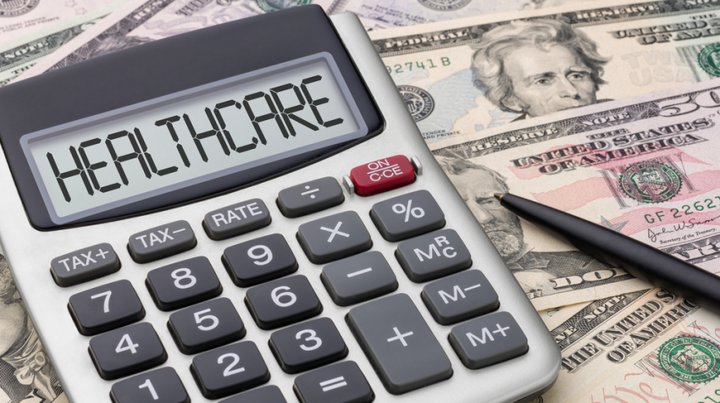
Politicians and the media often point to prescription medicines as the culprit for America’s massive spending on health care – 18% of GDP. In a recent interview, for example, CNN’s Chris Cuomo criticized Sen. Dick Durbin (D-Ill) for not doing enough to rein in drug costs. “Senator,” Cuomo, “it's sticking out there as this big, ugly number…. [You’re] ignoring the biggest number,…the biggest factor in the room.”
In fact, the “biggest factor in the room” is not prescription drugs but hospital care, which, according to the Centers for Disease Control (CDC) accounts for three times as much spending. In fact, drugs don’t even rank second. That honor goes to a category termed “physician and clinical services,” with spending double that of drugs. Here’s the shorthand: Hospitals account for about one-third of health spending; physicians and clinical one-fifth; drugs, one-tenth.
So, if you want to control health-care costs, the place to look first is obvious. Hospitals are where the money is.
Innovations are shortening – or eliminating – hospital stays. According to a study published in June by the Healthcare Cost and Utilization Project (H-CUP), a federal-state-industry partnership, inpatient hospital stays dropped 6% from 2006 to 2015 (the most recent year for these data) even though the U.S. population rose 8% over that period.
Why? One answer is better medicines. Drugs to treat high cholesterol and blood pressure have helped cut hospital stays for coronary atherosclerosis and other heart disease by 63% in a decade. Despite the fact that hospital beds are going empty, from 2005 to 2014, total hospital spending rose by about 50%, according to CDC data.
One reason is the huge mark-up hospitals place on medicines they administer. An October study by the Moran Co., prepared for PhRMA, looked at data on 20 drugs and found that, on average, charges by hospitals were 4.87 times the actual cost and reimbursements by insurers were 2.52 times the actual cost. These figures, say the researchers, are “conservative” because they do not include federal 340B discounts that reduce outpatient drug prices for hospitals by an average of 22.5%.
There are other reasons for high hospital costs, as well: rising labor costs, heavier burdens from insurance and regulations, and growing sophistication of medical procedures. But whatever the rationale, hospital costs far exceed drug costs, which are a small part of the overall health-spending picture.
In fact, the growth of spending on prescription medicines has been slowing. A recent report from the QuintilesIMS Institute projects that “moderating price increases for branded products, and the larger impact of patent expires, will drive net growth in total U.S. [drug] spending of 2-5 percent through 2021.”
But if drug costs aren’t the culprit, why do so many people think they are? The answer is that for modern specialty drugs consumers are being burdened with high out-of-pocket costs, mainly because of the way insurance policies are designed.
The 2016 Drug Trend Report, issued by Express Scripts, the largest of the pharmaceutical benefit managers, documents that the average unit costs of traditional drugs – for instance, statins for lowering cholesterol and amphetamines for attention disorders -- actually declined 2.3% compared to the previous year. But for specialty drugs – anti-inflammatory medicines like Humira, cancer drugs, and new medicines like Harvoni, that cure Hepatitis C – average unit costs rose at a much faster rate: 6.2%
While health insurance pays nearly all the costs of inexpensive generics, policies require copayments of 25% and more for expensive specialty drugs. And Medicare does not have a cap on drug costs. On average, out-of-pocket spending is 15% of total costs, compared with just 3% for hospitals, according to the CDC.
Those are average figures. Out-of-pocket costs, in real life, are far more of a burden for Americans who need specialty, as opposed to traditional, medicines. If that sounds crazy, blame the structure of insurance policies, both private and government-run.
Prescription drugs are not the “the biggest factor in the room,” but for many consumers, they could be if they get very sick. That’s the fault of insurance that doesn’t do what insurance is supposed to do: protect you against catastrophes. Your auto policy reimburses you when your car gets into a costly accident, not when you get an oil change.
Health insurers – including the federal government, with Part D Medicare -- should restructure policies to reimburse patients fully for therapies, drugs or otherwise, when they’re hit with catastrophes like cancer. As for pharmaceutical prices: the best way to modulate them is to increase competition among manufacturers – as the new Food & Drug Administrator, Scott Gottlieb, wants to do.
Finally, policymakers should focus on the big-ticket part of the health-care system – in-patient care. Medicines, which accounted for just 11% of the spending rise last year, are not the villain. To the contrary. Like exercise, smoking cessation, moderation in drinking, and a healthy diet, medicines keep Americans out of the hospital in the first place. In the end, that’s the best way to lower health-care costs.
